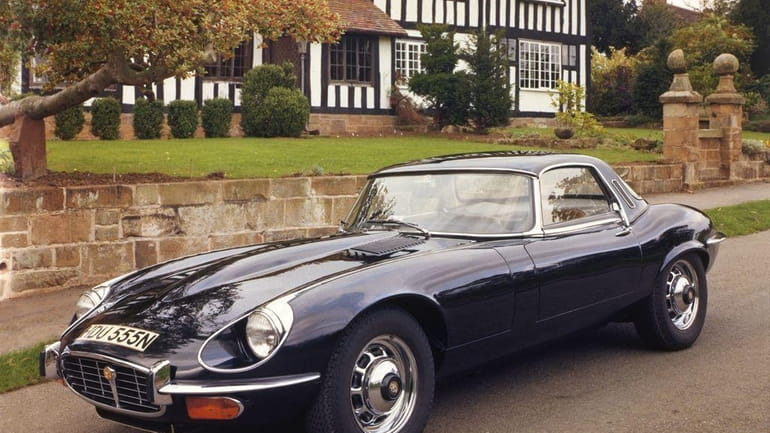Classic car brochures offer treasure trove of valuable information

The Jaguar XK-E was first introduced in 1961. Credit: Jaguar Land Rover
It was 1975 and I had a freshly minted New York State drivers license...something I wasn’t to have for very long, but that’s another story. I was college bound and my mode of transportation was a 1970 ‘Cuda.
But a some what more affluent friend would be attending school in Florida, and his mode of transportation would be a Jaguar XK-E Roadster. It was his high school graduation gift. The only problem was that he didn’t want to drive it from Long Island to Florida. So, with very little twisting of my arm, I was coerced into driving it down for him. I have, and always will consider myself a “muscle car” guy, but ever since that trip, the XK-E has been my favorite car of all time.
Recently, a friend who is a much more attentive listener than I am, heard me mention my love of the XK-E during an interview, and decided that some original factory XK-E literature and some period correct magazines would make a nice holiday gift. Which it did.
Looking through the literature reminded me not only how entertaining it can be, but what a valuable tool it can be during a restoration as well.
Yet for some reason this type of literature does not seem to have been embraced as a source of reference, even though it has been produced by the ultimate authority on the subject — the manufacturer.
Instead, we turn to publications with names like “The Ultimate Guide To Restoring Your (fill in your favorite collector car name).”
Rather, this literature is a source of entertainment, often as an afterthought to a restoration. And I have to admit that I am guilty of this myself. In many cases I will be walking through a car show, only to find a vendor selling original factory literature for a vehicle that I’ve just restored.
Naturally I purchase the literature, and a few days later when I’ve had the opportunity to peruse it, I find myself exclaiming, “Wow, I got that right.” Or just as often “Wow, I got that wrong.” Why hadn’t I thought to look at the literature in advance?
The literature, particularly the photos, are a treasure trove of original information unavailable anywhere else. One photo might show you minute details such as the original placement of a decal, or stripe or emblem. Another, the original plating of a brake booster or radiator cap. Yet another might show you whether the exhaust tips extend three inches or six inches beyond the rear valance panel, or whether the tail-light panel gets “blacked out” with matte or semi-gloss paint.
By examining the literature you may discover that the wheel opening molding that now graces your car was never available from the factory. Or that the cap filling the hole in your dash is where the rear-window defogger switch that you never even noticed was missing should have been. The list of options, as well as paint and interior combinations are usually included in this literature as well.
Aside from all of the logical reasons to use the factory literature as reference, is perhaps the most overlooked, and most important reason of all. There is no way to duplicate the feeling of holding in your hand an actual factory sales brochure that might have sat on a table in a dealer showroom some fifty, or sixty, or seventy years ago. It has a special look, and feel, and smell.
I recently sold a 1919 Auburn for which I had an original sales brochure. It was as much a work of art as was the car.
I am often present when experts are called in to “authenticate” the originality of a collector car, or to testify in court as to the authenticity, and I can truthfully state that I have never seen any expert produce original factory publications or literature to be used as a source of reference. They always carry with them their respective accepted guides. No one questions the authoritative contents of these books.
After all, the authors are experts, the editors are experts, and the publishers would not print these books if they were not accurate. I’ll let you in on a little secret. There is not a single guide to any particular marque or model that does not contain some inaccuracies. This is due in part to the fact that we as humans are fallible, and no matter how careful we try to be, we simply make mistakes. It is also because cars that are now considered collectible were produced at a time when nothing was 100% consistent. I won’t name particular brands, but think British and Italian.
I think that for my next restoration, I’ll begin by purchasing the factory literature to use as reference. In fact, I might even have it. I’ll have to search through the plastic bags full of literature that I collected as a child at the New York Auto Show some forty-five years ago.
Steve Linden offers specialized services in the field of antique, classic and collector vehicles. Steve is also the author of Everything You Need To Know: Car Collecting. E-mail questions to Steve@SteveLinden.com
For more about Steve check out www. SteveLinden.com
